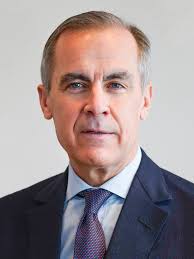Mark Carney: A Leader in Economics and Climate Strategy

Introduction
Mark Carney, the former governor of the Bank of Canada and the Bank of England, is a prominent figure in the fields of economics and climate change. His leadership and advocacy for sustainable finance and economic stability have made significant impacts worldwide, especially in a time where climate action is urgent and necessary. Understanding Carney’s influence is crucial for policymakers, businesses, and individuals concerned about the future of our economy and the planet.
Background and Current Role
Carney served as governor of the Bank of Canada from 2008 to 2013 before moving on to the Bank of England, where he held the position until March 2020. During his tenure, he garnered respect for his management of monetary policy, particularly during the financial crisis. Following his departure from the central banking world, Carney took on roles at various financial institutions, focusing heavily on tackling climate risks that threaten the global economy. Currently, he is the UN Special Envoy on Climate Action and Finance, amplifying his mission to integrate climate change with economic strategy.
Recent Developments and Initiatives
In October 2023, Carney participated in the G20 Summit, where discussions centered around financial systems’ resilience in the face of climate change. Carney emphasized the importance of aligning public finance with the goals set by the Paris Agreement, arguing for a global shift toward a greener economy. He advocated for financial frameworks that prioritize sustainability, urging global economies to adopt measures that mitigate climate risks.
Moreover, Carney’s work with the Glasgow Financial Alliance for Net Zero (GFANZ) has been pivotal in mobilizing substantial private sector investments in green projects. Under his leadership, GFANZ has attracted over $130 trillion in financial commitments aimed at achieving net-zero carbon emissions by 2050, showcasing how collaboration can drive systemic change in financial practices.
Conclusion
Mark Carney’s contributions to the intersection of economics and climate action are becoming increasingly relevant in today’s world. As climate change continues to pose risks to economic stability, his advocacy for sustainable finance serves as a model for future policy and corporate engagements. Looking forward, the continuation of his efforts will be critical in creating resilient economies that prioritize environmental sustainability alongside growth. For readers keen on understanding the evolving landscape of finance and climate, Carney’s insights offer valuable lessons on integrating ecological considerations into economic frameworks.







